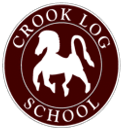Writing
Intent, Implementation and Impact
Intent |
|
The overarching aim for English is to promote high standards of language and literacy by equipping pupils with a strong command of the spoken and written language, and to develop their love of literature through widespread reading for enjoyment. Our intent of the writing curriculum is to ensure that all pupils write clearly, accurately and coherently, adapting their language and style in and for a range of contexts, purposes and audiences; use discussion in order to learn; they should be able to elaborate and explain clearly their understanding and ideas and are competent in the arts of speaking and listening, making formal presentations, demonstrating to others and participating in debate. |
Implementation |
|
Writing is closely related to reading - the two activities reinforce each other. Children are taught that from an early stage, much of their writing will be read by other people and therefore needs to be accurate, legible and set out in an appropriate way. They will see the writing process being modelled by the teacher and will be encouraged to take part in composing, spelling and handwriting activities individually, in groups and as a class. Class targets for writing are changed every half term and reflect the needs of the class. Free writing areas are in all EYFS classrooms, with a range of writing equipment and paper. Role play areas provide opportunities for writing – taking orders at a café, booking a holiday, selling a house. We encourage the child to see her/himself as an author and where appropriate her/his writing will be developed into a book. This helps the child to be aware that her/his work has a wider audience and also the importance of good presentation. From KS1, children are encouraged to write for a variety of purposes in many different subjects, their writing is discussed and edited with a member of staff. When appropriate, the children produce a final draft. Children are taught correct cursive letter formation from the outset. The Power of Reading planning incorporates many writing genres from poetry to fiction to non-fiction, all stemming from quality literature. Each classroom provides an environment which supports the writing process. We aim to have a language rich environment to support reading and writing. Children’s writing is displayed at all times. In KS1 the teachers highlight VCOP visual strips, to give strong visual feedback to individuals. Children are encouraged to self-assess in the same way when they are ready. In KS2, Success Criteria is used for self, peer and teacher assessment in a ‘Great’, ‘Amazing’ and ‘Awesome’ table stuck on each piece of work. Children are encouraged to peer assess from year 3. We use the Pie Corbett feedback system, enabling children to respond to marking throughout KS1 and 2. |
Impact |
|
Children can write in a range of genre and for a variety of purposes, with fluency, accuracy and enjoyment. Their progression and attainment is evident in all their books and in the school environment. |





